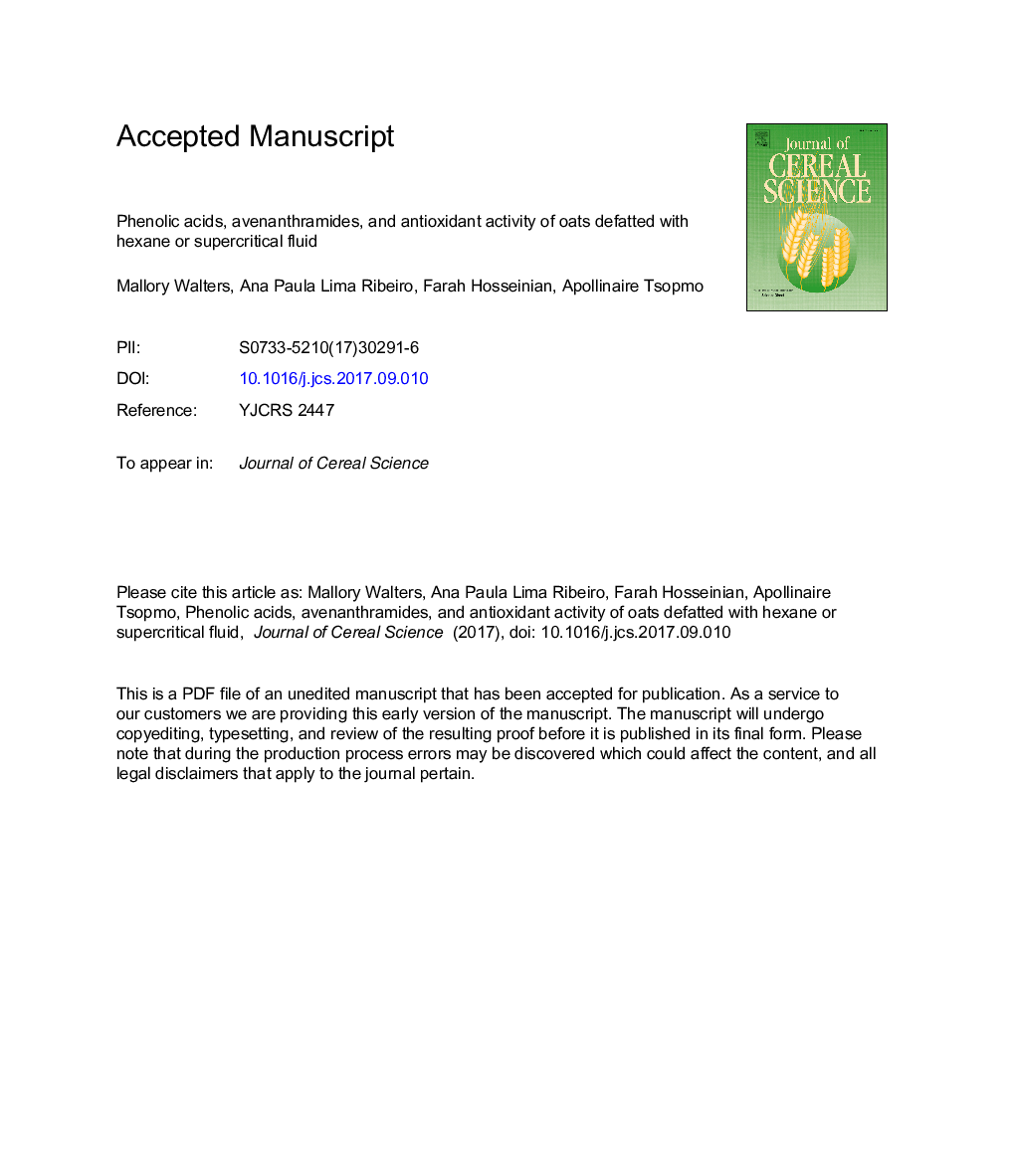| Article ID | Journal | Published Year | Pages | File Type |
|---|---|---|---|---|
| 8881444 | Journal of Cereal Science | 2018 | 25 Pages |
Abstract
The aim of the study was to determine the effect of two defatting methods on antioxidant activities and polyphenol contents of oat milling fractions. Whole flour (WF), medium oat bran (MB), fine bran (FB) and low bran (LB) were defatted with hexane or supercritical carbon dioxide (SC-CO2) fluid and then extracted with aqueous methanol. Oil yields from SC-CO2 extractions were 3.1-5.3% compared to 2.3-5% for hexane extraction yields. Three main avenanthramides (AVs) and five phenolic acids, vanillic, caffeic, para-coumaric, ferulic and cinnamic acids were quantified by HPLC. The AV contents of three of the defatted flour/bran samples (WF, LB, FB) were 1.7-2.4-fold higher when SC-CO2 was used instead of hexane. However, for MB sample, using SC-CO2 resulted in lower concentration of AVs (but not phenolic acids) compared to hexane implying that its larger particle size was a limiting factor for AVs only during the SC-CO2 step. FB had the highest amount of AVs (358.9 μg/g) compared to other samples (172.1-277.8 μg/g). The same trend was observed for phenolic acids. HPLC data corrected (p < 0.001) with ROO
- scavenging activities. FB-SC-CO2 had the highest ROO
- activity (23.0 μM TE/g) and highest inhibition of HO
- radicals (25.5%). In summary, SC-CO2 and fine particles were better facilitated the extraction of polyphenols in the defatted fraction and yielded higher radical scavenging activities.
- scavenging activities. FB-SC-CO2 had the highest ROO
- activity (23.0 μM TE/g) and highest inhibition of HO
- radicals (25.5%). In summary, SC-CO2 and fine particles were better facilitated the extraction of polyphenols in the defatted fraction and yielded higher radical scavenging activities.
Related Topics
Life Sciences
Agricultural and Biological Sciences
Agronomy and Crop Science
Authors
Mallory Walters, Ana Paula Lima Ribeiro, Farah Hosseinian, Apollinaire Tsopmo,
